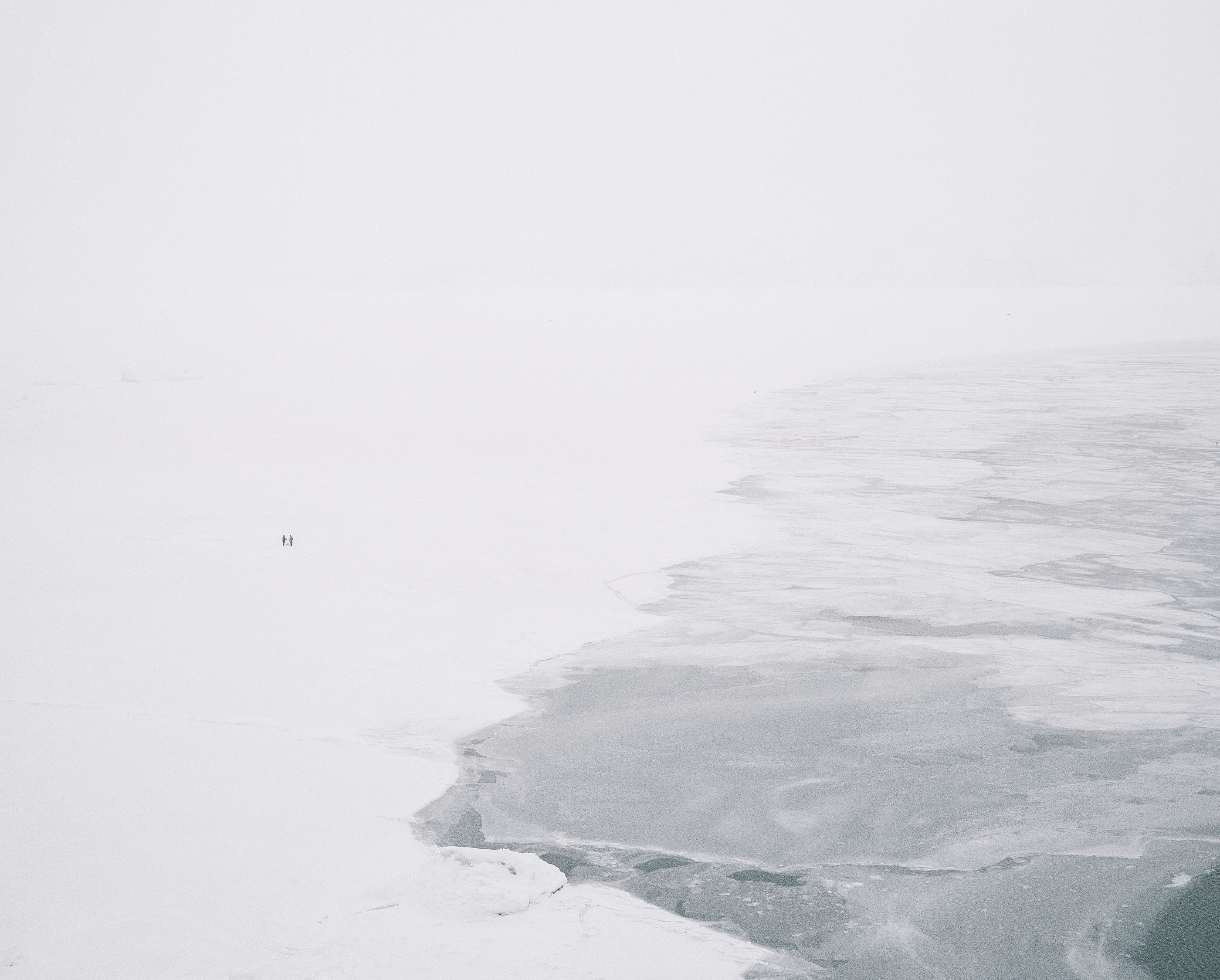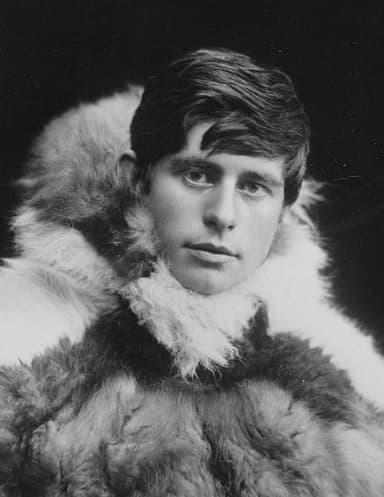
THE BIG MELT
A data-driven story of sea-ice decline by Lukas Kreibig
The Arctic is Warming Four Times Faster Than the Global Average
In the Fast-Warming Arctic, Sea-Ice Melt Is Now a Constant Reality
How the Ice is Vanishing
In the Arctic, entire communities depend on sea ice for survival. But what happens when that ice starts disappearing faster than ever before?
Greenland
The world's largest island. 80% ice sheet, 20% rugged coastline. Along this coast, deep fjords carve hundreds of kilometers inland, creating sheltered harbors where Arctic communities have thrived for millennia.
Uummannaq Bay
600 kilometers north of the Arctic Circle, this bay opens into one of Greenland's most dramatic fjord systems. For most of the year, sea ice turns these waters into frozen highways.
Uummannaq Island
Home to 1,300 people living beneath a distinctive heart-shaped mountain. This community represents hundreds of Arctic settlements whose existence depends entirely on predictable sea ice patterns.
But those patterns are changing...
Heart of a Seal
The Arctic island of Uummannaq is named after its iconic mountain that is shaped like the Heart of a Seal. Beneath it lies the town with the same name: Uummannaq.
In the winter months, the sea ice around Uummannaq starts to freeze and connects it to the mainland. Inhabitants can travel freely around and are not restricted to the island anymore.
Fishing is a crucial part of this town, most people live from this industry. Traditionally fisherman go ice-fishing on the sea ice. But all of this is in danger...
Voices from the Community
In interviews gathered for the Life on Thin Ice study, Uummannaq residents explain how fast-shrinking winter ice is altering travel, hunting and tradition. Lets listen to their problems.
How to measure ice?
But how can we measure this feeling of the Uummannaq residents? The answer lies in space: Satellite photos can provide us with reliable information.
First, here's the top-down view our satellite sees.
Now the raw winter image we analyse. One of those for every day.
One picture a day since 2017. Thats a LOT of pictures. So how do we automatize that and make the images into?
The answer AI: A self built Computer Vision pipeline that detects Clouds, Land and calculates how much Ice is in a picture.
This is how the results look like. After computer-vision processing, ice (yellow and turquoise) pops out. Now if we do this for every day we have data for we can look at almost a decade of data. Shall we?
A Decade of Seasons
Here our results: Each small chart shows one season of sea ice from February to June.
The Numbers Don't Lie
When we look at all the years, we can already see a trend here:
Shorter Sea Ice Winters
The statement: "When I was a child, the ice was gone in June and July, now it is gone in April and May" is precisely correct.
When "Normal" Shifts
Lets compress our collected data into two comparable timeframes: Before 2021 and after. We look here at the average (mean) of 2017 to 2020 and 2021 to 2025.
When "Normal" Shifts
The blue line shows the 2017-2020 mean: what was considered normal just four years ago. The light blue band represents typical seasonal variation.
Living Outside the Lines
The red line shows 2021-2025 mean: the new reality.11.9% less ice coverage means the community now lives permanently outside what was once normal variation.
Hence: motorsleds replacing dog teams, boats replacing ice roads.
Where This Is Heading
Current rate of change: 3% loss per year.
From Uummannaq to Arctic
The Data showed us Sea Ice loss in Uummannaq is imminent. But what about the arctic in general? Lets look at some more comprehend data that explains the whole arctic situation.
A Spaghetti Bowl of Bad News
Each line traces a year of Arctic sea ice from minimum to maximum and back again. Blue lines show colder years, red lines show warmer years.
1979 - 2000: The Cold(er) Half
Let's focus on the first half of our record, from 1979 to 2000. Hover and notice how much higher the blue lines sit.
2000 - 2025: The Hot Half
Now the most recent century takes the centre‑stage. The red lines cluster lower and lower.
This Year, Right Now
Finally, isolate the current year. Where does it sit? Spoiler: below the historical average once again.
Breaking Through the Floor
This isn't natural variation, it's a system in free fall.
Six Decades, One Direction
Each colored band represents a decade of Arctic ice measurements. Watch as we reveal them one by one—and notice the unmistakable staircase downward. We start with the 1970s.
The 1980s: The Old Normal
This light blue band shows what Arctic ice looked like when many of us were born. Values around zero million km² were typical for late summer.
The 1990s: First Cracks
Each new decade settles slightly lower than the last. The changes seem gradual, but they're building momentum.
The 2000s: Going Down
The downward spiral holding on. (replace)
The 2010s: Acceleration
The decline steepens. Values around -0.6 million km² become common—territory that was unthinkable just decades earlier.
The 2020s: Free Fall
The current decade sits at the bottom of the stack. Values around -0.9 million km² show how quickly the "new normal" keeps shifting downward.
We're not just losing ice—we're accelerating into unknown territory.
The Tipping Point
Each bar shows how much above (blue) or below (red) the long-term average that year finished. Think of zero as the "normal" line.
The 1980s and 90s danced around normal. The 2000s leaned negative. The 2010s and 2020s? Almost entirely red.
We've crossed a threshold, and there's no going back.
The Smoking Gun
Three lines, one story: atmospheric CO₂ (green), global temperature (blue), and Arctic temperature (red) have marched in lockstep for decades.
This isn't correlation, it's causation. More CO₂ traps more heat, and the Arctic feels it first and fastest.
The connection is undeniable.
Apples to Apples
How do you compare CO₂ levels (measured in parts per million) with temperature (degrees) and ice extent (square kilometers)?
By converting everything to the same scale: how many standard deviations each measurement is from its historical average. Now we can see the patterns clearly.
The Mirror Image
When we flip the ice loss data upside down, something remarkable appears: the rise in CO₂ and temperature perfectly mirrors the loss of ice.
Three different measurements, one unified story. This is what climate change looks like in data.
2024: The Exclamation Point
While global temperatures broke records in 2024, Arctic temperatures soared even higher—rising at roughly twice the global rate.
That towering red bar isn't just data, it's a warning. Climate impacts don't spread evenly across our planet. They hit the Arctic first, and they hit it hardest.
What happens in the Arctic doesn't stay in the Arctic.

Scientists forecast ice-free Arctic summers before 2050
The Arctic is the planet's canary.
Will we listen?
Lukas Kreibig
Data journalism, coding & visual design.
© 2025 – All rights reserved
Contact
Phone: +49 (0) 176 444 69 498
Email: lukas.kreibig@posteo.de
Sources & Methodology

Chat with Knud Rasmussen
This AI chatbot is trained on the 'Eskimo Folk-Tales', a unique collection of Greenlandic legends and myths gathered by Danish-Greenlandic polar explorer Knud Rasmussen (1879-1933) during his legendary Thule Expeditions.
Known as the 'Father of Eskimology,' Knud Rasmussen conducted groundbreaking expeditions across the Arctic from 1912-1924. Fluent in Greenlandic, he collected over 20,000 pages of Inuit oral traditions and stories of spirits, shamans, hunting, and Arctic life.
The 'Eskimo Folk-Tales' contain hundreds of stories: from Tulugaq the great raven who brought light to the world, to Sedna the sea goddess. These tales offer unique insights into the spiritual world of the Inuit.